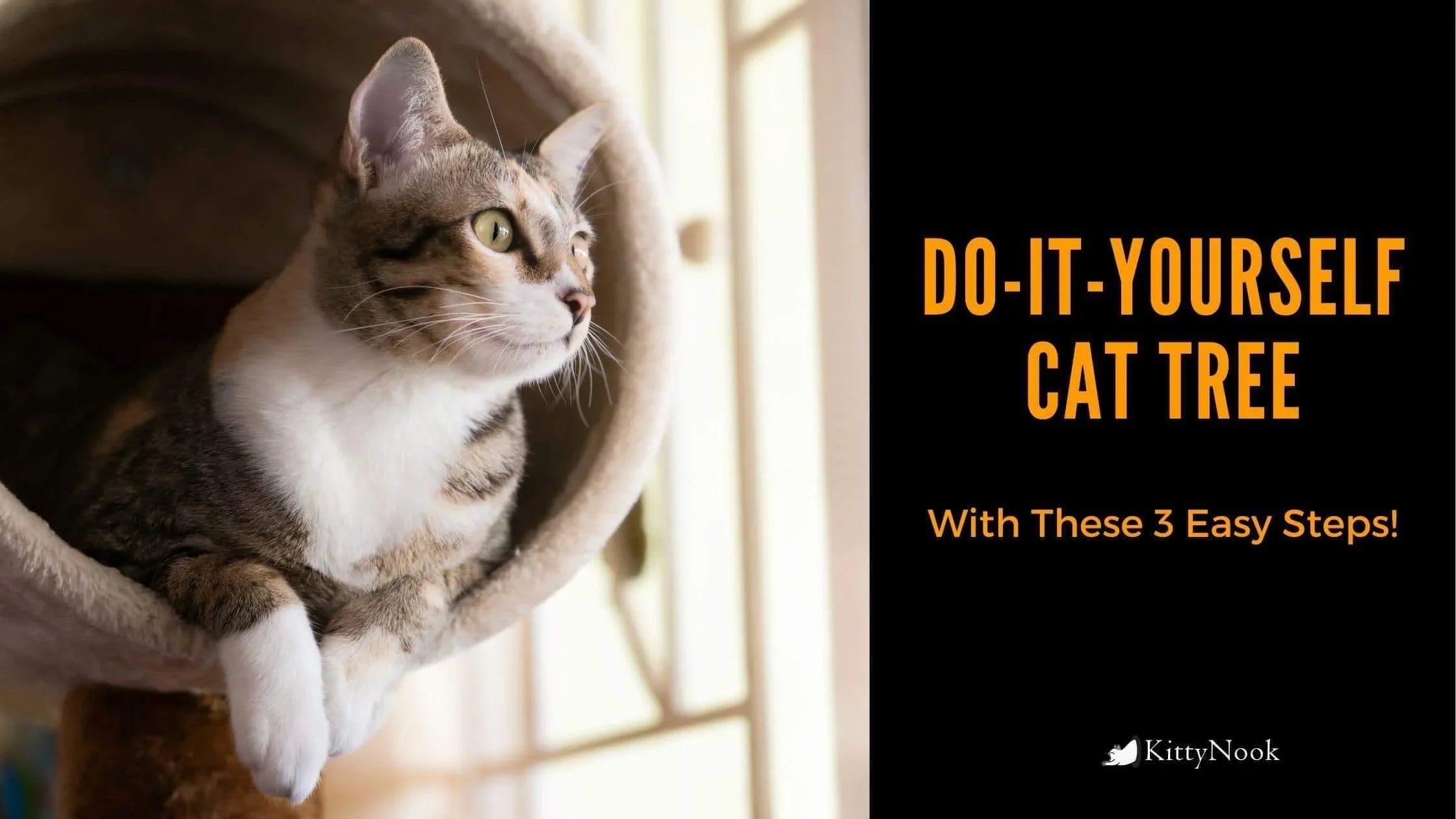If you have one or more cats at home, a well-made cat tree is crucial. Two is even better. However, shopping for one can be fraught with high prices, wrong sizes, weird layouts, challenging set up, and more.
It's easy to understand that many of us will not have the time to construct a cat tree. If this is the case with you, don't fret! You can still purchase an excellent quality cat tree online.
Those who have the time on their hands and want complete control over how the cat tree will look and feel, it would be best to build one. With a Do-It-Yourself cat tree, you can customize to your furry baby's requirements. You'll also have complete control over the dimensions and style. This is especially beneficial if you have a small of an unorthodox area you have in mind to place the cat tree in.
A Do-It-Yourself cat tree is not as difficult as you might believe. And we will help you! We will cover the things you need to consider. Who know, you might even discover a few useful abilities that you have hidden within you!
We want you to get from this blog all the information you need to construct a durable, great high-quality cat tree. Nevertheless, you must practice risk-free methods and use all tools according to what the instructions require. We are not liable for any injuries, damages, or other outcome of your DIY cat tree.
Let's get on to it!
Step 1: Design Your Cat Tree
Decide your design strategy. Your plan will assist you in each step and tell you what materials you will require to acquire. Look at cat trees in online stores for layout concepts. You may draw them on a sheet of paper if you can. You may also search for templates on the Internet. Stay away from complicated cat trees if you don't have a lot of experience.
Factors to Think about:
Your Cat

- Does she or he like climbing, leaping, sitting high above the floor, or does your cat like to remain in a window perch degree?
- What's your cat's age and activity?
- Is your cat obese?
- How many cats do you have?
Many pet cats like to rest high up above, looking down. A cube-shaped sleeping quarter will undoubtedly be appreciated if you're feline to obtain away from it all. A sisal rope covered pole will be needed. Many pet cats like to sleep on the platforms. Making one or two platforms huge enough to curl up would be ideal.
The Area
Think about where in the house you would like to place the cat tree. Cats usually prefer their trees near or in front of a window.
Your ability level
What are your carpentry abilities? Whatever your degree, you can build an excellent cat tree if you choose a layout appropriately.
Availability of Do-It-Yourself Cat Tree Materials
Generally, the "cost-free" cat trees that you can find online are tough to construct. They're also not realistic. Finding one suited for your cat might prove to be challenging, but they can be found.
Step 2: Purchase Your Materials
Two primary materials will be required once you have discovered your layout. Plywood is commonly used for horizontal platforms, while a sturdier wood is best for upright poles.
The rug or a fleece fabric is an excellent cover for the platforms. A little carpet cushioning underneath makes it extra comfy.
Here are some of the tools you might need:
- Wood screws
- Hammer
- Nails
- A table saw.
- Wood glue
- Drill
Make sure to read the material checklist on your selected plan thoroughly. Do the building process one step at a time if this is your first time to build.
Step 3: Put Together The Feline Tree

When you have every little thing gathered for the task, it will certainly be time for the enjoyable to begin!
Cut the products into the required dimensions.
A hand saw may suffice for cutting the lumber, but a table saw—like a jigsaw—is ideal for plywood sheets. Smooth the harsh edges with sandpaper.
Build the cat tree base
Perhaps the most crucial element of a cat tree is a good and stable base. A good base should be broader and longer than all the other cat tree parts.
Cover the base with the use of a rug or fleece
You can cover the base with a rug. If you don't have one, a fleece or an extra thick upholstery material will also do the trick. Always cut carpeting or fabric a couple of inches bigger than the base. Wrap the carpet over the base's sides to the underside and safely keep in place with a staple gun.
Connect the vertical elements to the base
The vertical components will hold the platforms in place. When attaching them, you can use wood glue, nails, and/or screws. If you're using wood glue, you may also want to secure with screws to ensure the structure will hold.
Flip the base upside-down and drill the holes you needed on the underside where the posts will be attached. Cover the base with a rug or sisal rope. Affix the vertical posts by screwing or nailing it through the holes.
Affix horizontal perches to the upright posts
You can utilize wood screws or wood glue to attach your plywood perches to the upright posts. Cover the platforms and together with the screw and nails with carpeting.
Refer to your design for accessories
Always look at your plans as you continue to add the different components of your cat tree. You can readjust your layout when needed to make it extra secure. You can be creative in covering any mistakes.
Stand back and take a look at your new cat tree! The real test will be your pet cat's approval, of course!





















